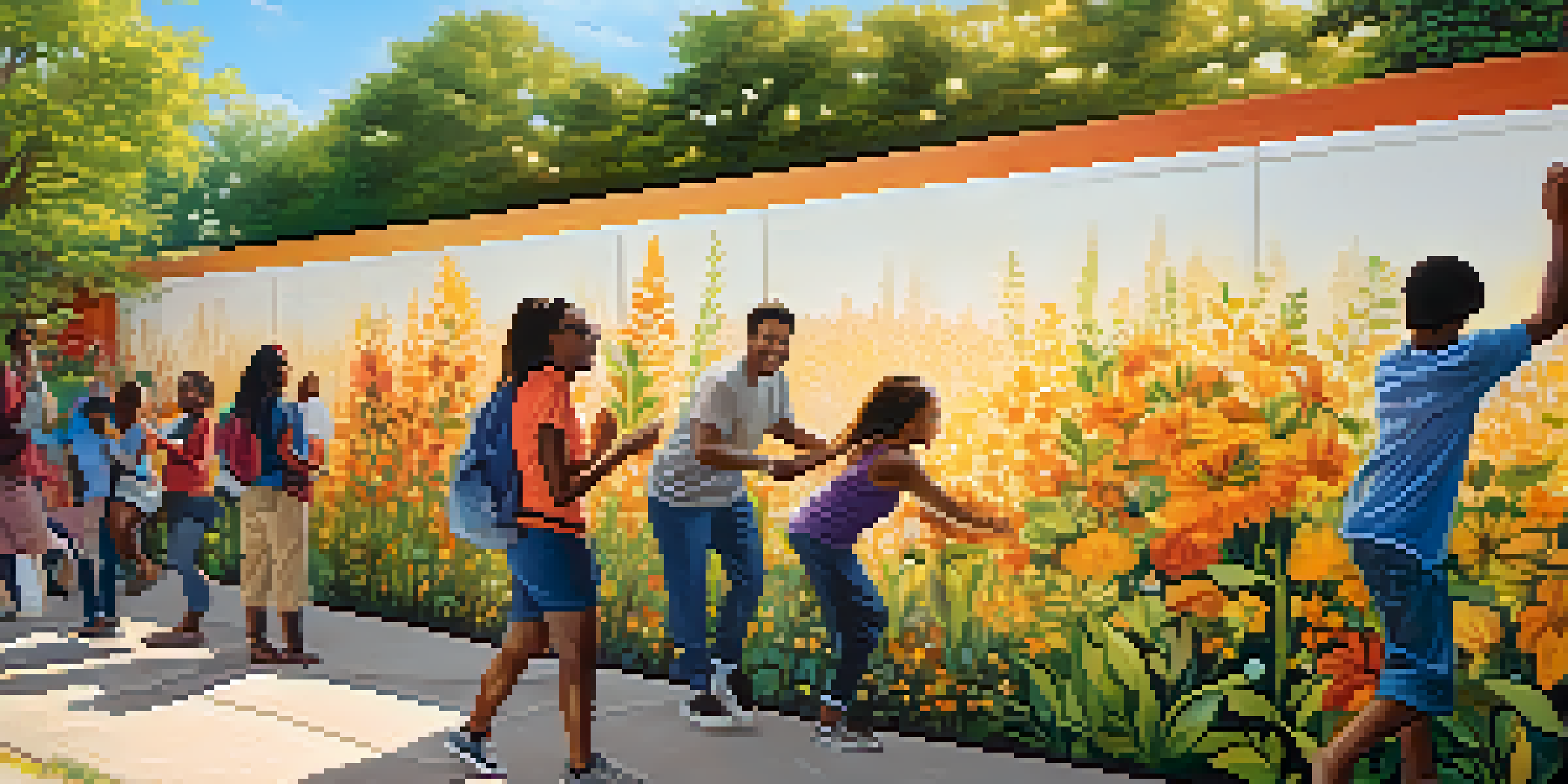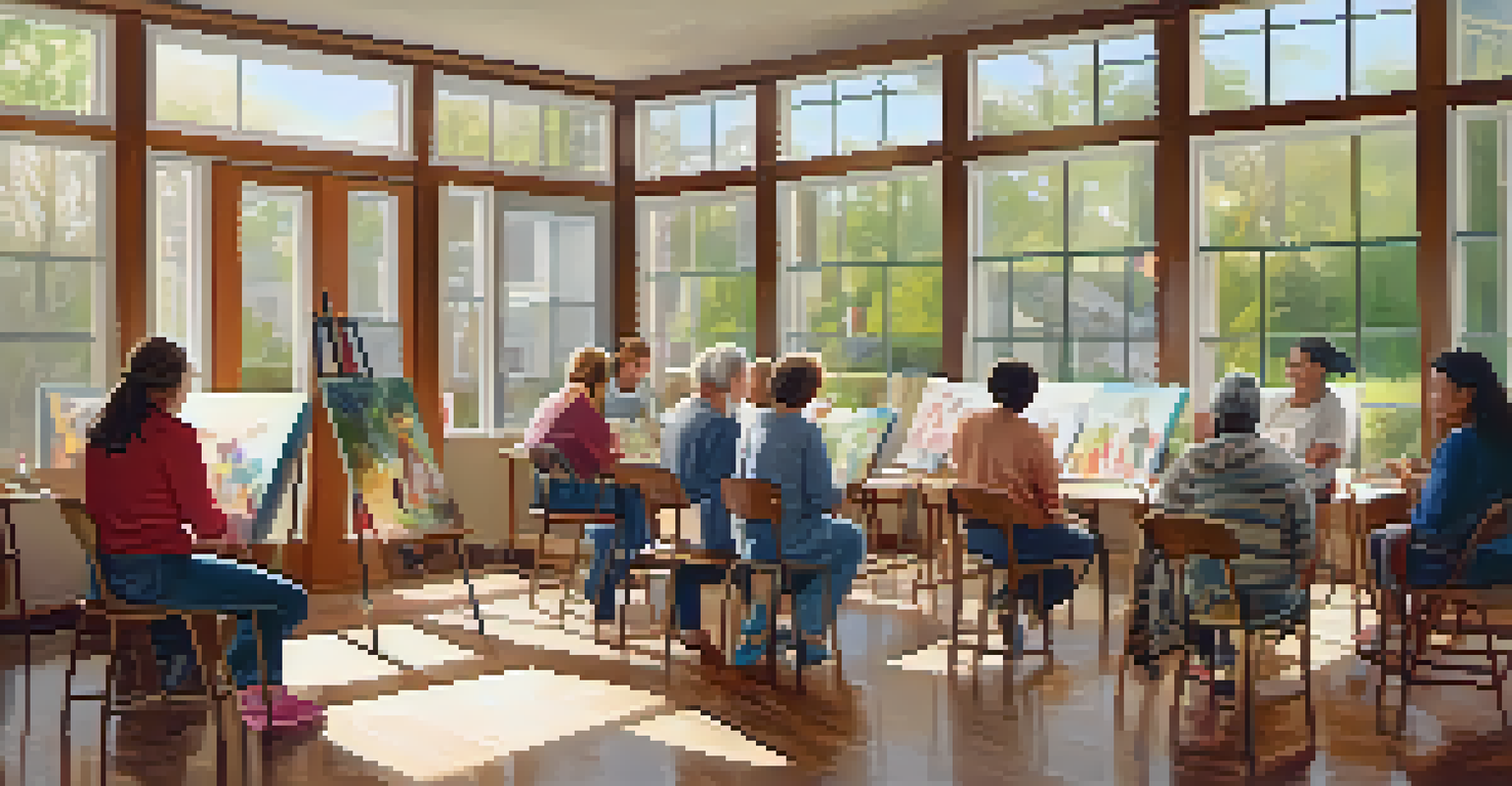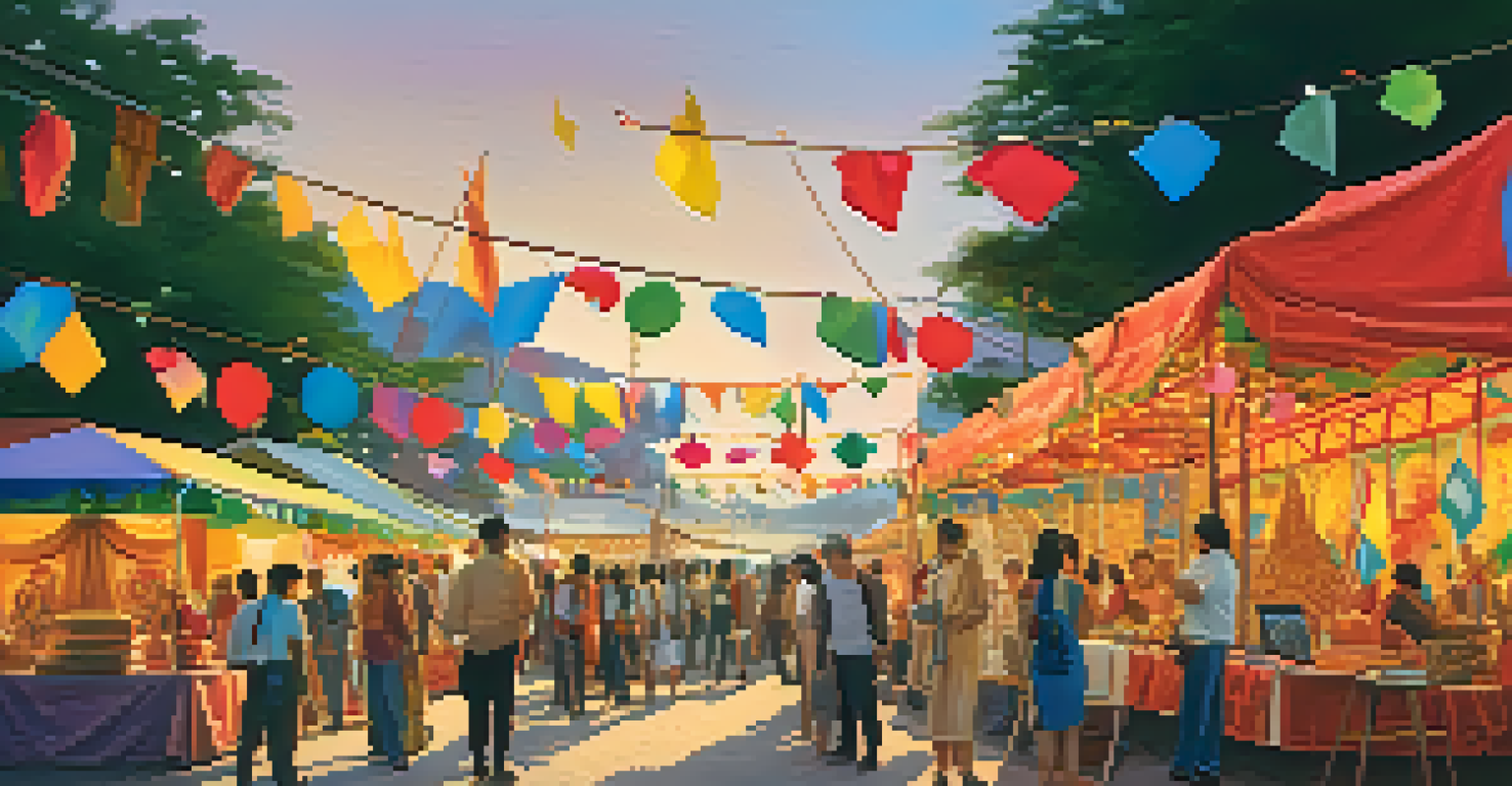The Connection Between Visual Arts and Community Wellness

Understanding Community Wellness and Its Importance
Community wellness encompasses the physical, mental, and social well-being of individuals within a community. It’s not just about healthcare; it’s about creating an environment where everyone can thrive. When a community prioritizes wellness, it often leads to lower crime rates, improved economic stability, and a greater sense of belonging.
Art is not freedom from discipline, but disciplined freedom.
At its core, wellness is about connection—between people, their environment, and the resources they have access to. A healthy community encourages engagement, support, and collective responsibility for one another. This interconnectedness is crucial in fostering resilience and empowerment among residents.
Ultimately, enhancing community wellness requires collaborative efforts, where various sectors, including health, education, and the arts, come together. Visual arts play a significant role in this dynamic, offering unique avenues for expression, connection, and healing.
The Role of Visual Arts in Community Engagement
Visual arts serve as a powerful tool for community engagement, bringing people together through shared experiences. From murals that beautify public spaces to community art classes, these activities foster a sense of belonging and pride. When individuals collaborate on artistic projects, they not only create something tangible but also build relationships.

For instance, a local mural project can transform a dull wall into a vibrant expression of the community's identity. This not only beautifies the area but also sparks conversations among residents, bridging gaps between different demographics. It becomes a focal point for community gatherings and celebrations.
Community Wellness Enhances Lives
Prioritizing community wellness fosters connections, reduces crime, and boosts economic stability.
Moreover, engaging with visual arts encourages participation from diverse groups, including children, seniors, and newcomers. This inclusivity enriches the community, as everyone brings their unique perspectives and talents to the table. In this way, visual arts become a unifying force that strengthens community ties.
Healing Through Art: A Therapeutic Approach
Art therapy has gained recognition for its therapeutic benefits, particularly in enhancing mental health. Engaging in creative activities allows individuals to express emotions that might be difficult to articulate verbally. This process can be incredibly cathartic, offering a safe outlet for feelings of anxiety, depression, or trauma.
Creativity takes courage.
Communities that provide access to art therapy programs often see improved mental well-being among participants. For example, a community center offering painting classes for those dealing with grief can help individuals process their emotions in a supportive environment. The act of creating art becomes a healing journey.
Furthermore, art therapy can foster connection among participants, as they share their stories and experiences. This sense of shared vulnerability cultivates empathy and understanding, ultimately contributing to a more resilient community. Healing through art transcends individual experiences, creating a ripple effect of wellness.
Visual Arts and Cultural Identity
Visual arts play a crucial role in expressing and preserving cultural identity within communities. They provide a platform for individuals to showcase their heritage, traditions, and stories. This representation fosters a sense of pride and belonging among community members, strengthening their connection to one another.
For instance, cultural festivals often feature visual art displays that highlight the unique artistic expressions of different ethnic groups. These events not only celebrate diversity but also educate others about various cultural backgrounds. In this way, art becomes a bridge that connects people across different cultures.
Visual Arts Unite and Heal
Engaging in visual arts promotes inclusivity, fosters relationships, and serves as a therapeutic outlet for emotional expression.
Moreover, preserving cultural identity through visual arts can empower marginalized communities. By amplifying their voices and perspectives, these communities can reclaim their narratives and challenge stereotypes. This empowerment leads to a more inclusive society, where everyone's story is valued and recognized.
The Economic Impact of Visual Arts on Communities
Investing in visual arts can have significant economic benefits for communities. Art initiatives often attract tourists, boost local businesses, and create job opportunities. For example, an art gallery or studio can draw visitors, leading to increased foot traffic for nearby shops and restaurants.
Moreover, art festivals and exhibitions can serve as economic catalysts, generating revenue through ticket sales, merchandise, and food vendors. This influx of money can be reinvested into the community, funding further art projects or wellness programs. It's a cycle that promotes sustainability and growth.
Additionally, supporting local artists contributes to the economy by keeping talent within the community. When artists thrive, they can offer workshops, collaborate on projects, and inspire the next generation. This creates a vibrant arts scene that enhances both the cultural and economic landscape of the community.
Visual Arts as a Tool for Social Change
Visual arts have long been a means of addressing social issues and advocating for change. Artists often use their work to highlight injustices, raise awareness, and inspire action. This form of activism can galvanize communities to come together for a common cause, fostering a spirit of collaboration and determination.
For instance, street art and graffiti can convey powerful messages about social justice, often sparking conversations that might otherwise go unheard. These artworks serve as public reminders of the issues at hand, encouraging community members to engage and take action. The visual impact of art can be a catalyst for social movements.
Art Drives Economic Growth
Investing in visual arts generates economic benefits by attracting tourists, creating jobs, and supporting local businesses.
Furthermore, when communities rally around artistic expressions of social change, they cultivate a sense of solidarity. This shared commitment can lead to grassroots initiatives that address the root causes of issues, whether it’s poverty, inequality, or environmental concerns. In this way, visual arts become a transformative force for social good.
Fostering Creativity: The Future of Community Wellness
Looking ahead, fostering creativity through visual arts will be essential for community wellness. By prioritizing artistic initiatives, communities can create safe spaces for exploration and innovation. This not only enriches the cultural fabric but also empowers individuals to think critically and express themselves freely.
Encouraging creativity can also lead to problem-solving and collaboration, essential skills in today’s interconnected world. Workshops, public art projects, and community galleries can serve as incubators for new ideas and solutions. When people are encouraged to think creatively, they often find innovative ways to address local challenges.

In conclusion, the connection between visual arts and community wellness is a powerful one. By embracing creativity and supporting artistic endeavors, communities can cultivate an environment where everyone thrives. A commitment to the arts is ultimately a commitment to the well-being of the entire community.